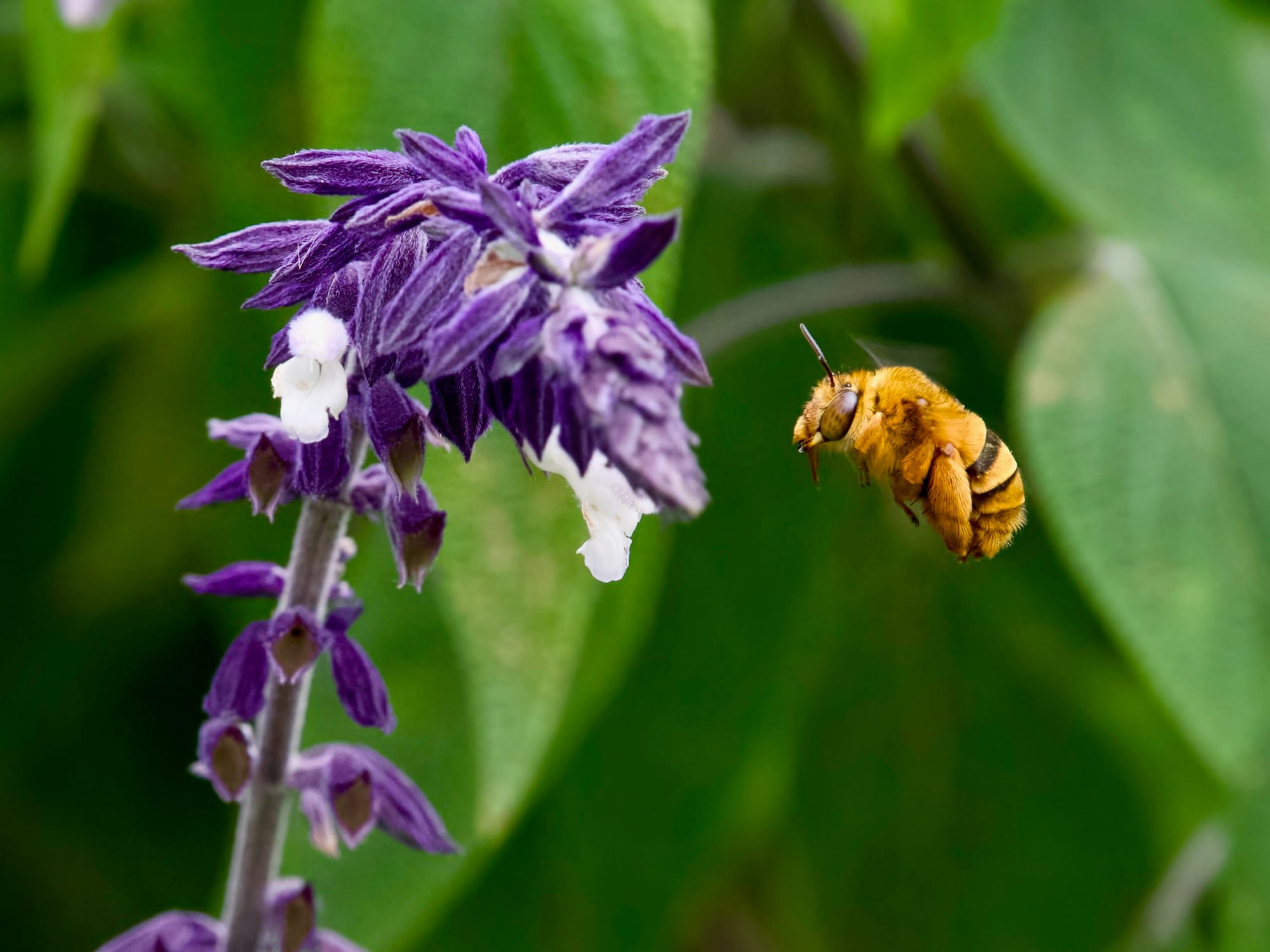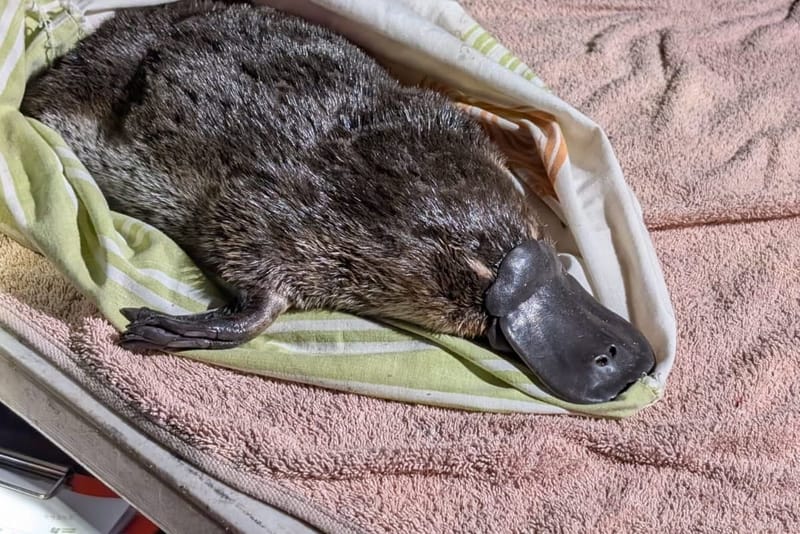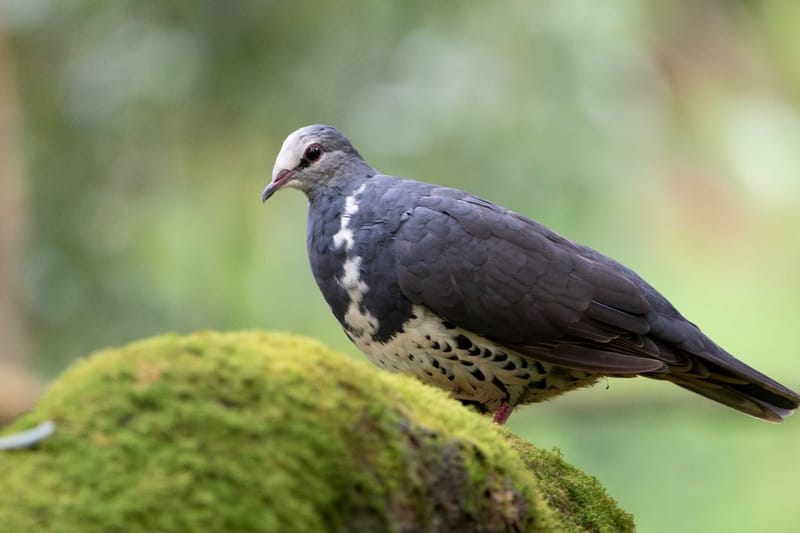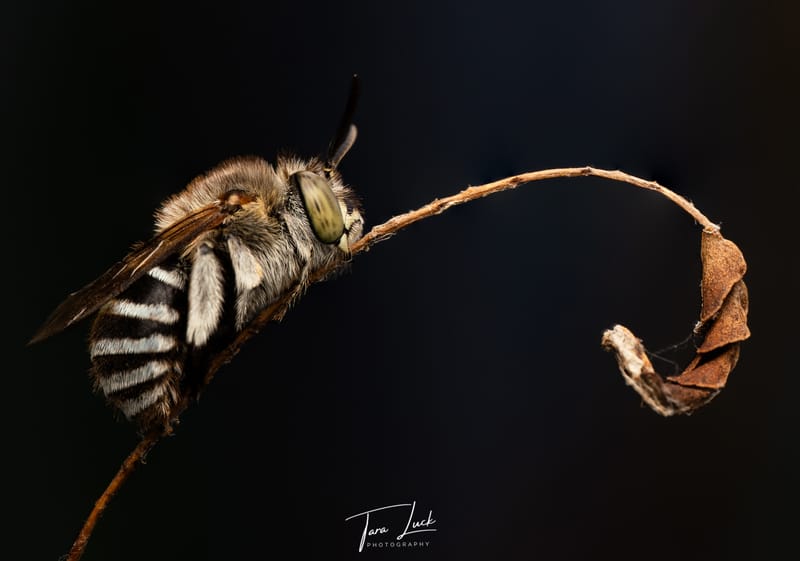Bee-utiful plants for pollinators
Garden designer Narelle Happ shares three plants to bring in the bees
I’m sorry, but I just can’t wait an entire week for Alison Mellor’s free talk Secret Life of Native Bees at Wollongong Library. I have to do something bee-related in the meantime and I turned to local gardening guru Narelle Happ for help.
Alison’s talk, which is for the entire family, will shed light on the hidden lives of our native bees from the much-loved Blue-Banded Bees through to the dastardly Neon Cuckoo Bees (boo, hiss). You can expect to hear about how they build their homes, where they sleep (did you know male Blue-Banded Bees sleep holding on to a stem with their jaws?! Check out Tara Luck’s photo of a BBB doing just that) and how you can help by becoming a citizen scientist.
After the recent spate of lovely gardening weather, I couldn’t help but notice that my backyard is currently devoid of some of my favourite bee species. It’s visited by wasps and butterflies, dragon and robber flies of all shapes and sizes but since I’m in my native bee era, that’s who I’m focused on now.
I asked Narelle, garden designer, horticulturist and founder of A Garden for Life for some planting suggestions to help me, and you, to attract more of these gorgeous pollinators to the garden.
“Our native bees are attracted to mauve, blues and whites in the landscape, so to attract them to your garden, try and include plants of these colours, particularly ones that flower in different seasons to keep our pollinators happy,” Narelle explained. “Local species is also the key, this ensures strong growth and prolific blooms.”
Three plants to bring in the bees
Here are three of Narelle’s suggestions for a bee-utiful garden.
Ozothamnus diosmifolius – Rice Flower
A versatile shrub that can cope with most soils, flowers all year, and makes a great cut flower, which our native bees love. Grow in full to a part sun position and prune to encourage more blooms and a bushy habit.
1-2m x 1m
Veronica perfoliata – Digger's Speedwell
A versatile ground cover and small shrub that attracts our native stingless bees, Tetragonula sp. in droves. Grown along pathways, under trees and in pots, this plant has prolific mauve flowers in spring and summer that our native bees love.
Prune hard if becomes leggy, in early autumn.
50cm – 1m x 1m
Grevillea sericea - Pink Spider Flower
This shrub grows in most conditions in the garden from full sun to part shade. Prolific flowers from late winter through to autumn, and often flowering all year, the spider flowers on this shrub are loved by our native bees. Blue-Banded Bees are often seen buzzing around the small, but plentiful flowers.
Prune early autumn to maintain a bushy habit.
1-2m x 1m
More info
To learn more about Narelle’s work or to sign up for one of her hands on workshops head here and to have your socials filled with gorgeous florals, bush foods and artwork follow A Garden for Life on Insta and Facebook
For more details and to secure your free ticket to Secret Lives of Native Bees at Wollongong City Library, head here.
Follow Alison @Paperbark_native_bees for loads of gorgeous bee photos and facts on Instagram





